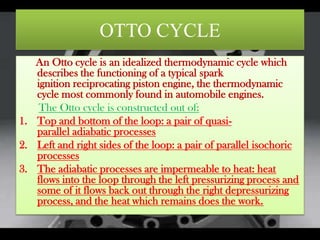The document discusses different types of engines including internal combustion engines. It describes how internal combustion engines work by converting chemical energy from fuel into mechanical motion. Specifically, it details the four stroke Otto cycle that is commonly used in automobile engines. The Otto cycle involves intake, compression, power, and exhaust strokes. It explains that the thermal efficiency of an Otto engine depends on its compression ratio.
























